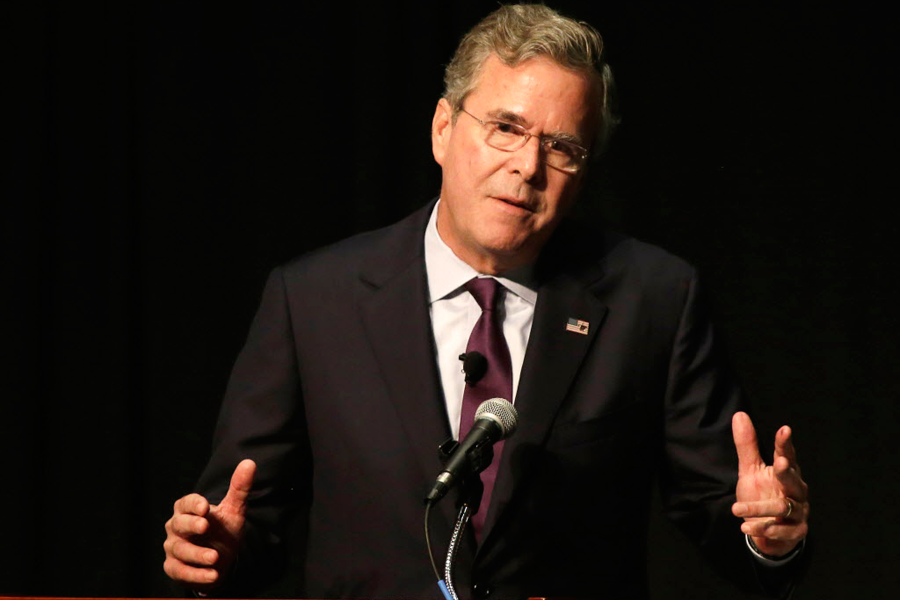Five questions to ask about presidential candidates' tax plans
I recently suggested that voters look seriously at the tax proposals being touted by presidential candidates, even though those plans have little chance of ever becoming law as proposed. But what should those voters look for as they sort through these complex ideas? Here are five questions you should ask yourself about any candidate’s tax plan:
What would the plan do to the nation’s deficit and accumulating debt? It may be unreasonable to expect any candidate to propose a plan that would raise revenue to help reduce the deficit, but there are key issues to consider even if every plan involves a net tax cut and revenue loss. For instance, what is the scale of the revenue loss? Would the plan greatly exacerbate our current deficit or only marginally do so? If the revenue losses are significant, does the candidate propose meaningful spending cuts to close the budget gap? If so, what are they?
Do the candidate’s revenue claims require substantial economic growth? Tax plans have traditionally been scored based on “static” revenue estimates. That is, estimates that assume taxpayers adjust behavior in response to changes in the law, but do not attempt to calculate how changes in the overall economy might affect tax revenues. This year, the Joint Committee on Taxation began to include a “dynamic score” that does take into account those macroeconomic feedback effects.
The problem is that candidates can assert that their tax plans will generate substantial economic growth—enough to make any revenue loss from tax cuts disappear. The question for voters: How credible are those feedback effects? It may be reasonable to assume that additional revenues from growth offset perhaps 10 percent to 15 percent of a plan’s static revenue loss. But be very suspicious of claims that “dynamic effects” offset 30 percent to 50 percent or more. These estimates are not supported by economic research, as noted by the Tax Policy Center’s recent analyses of Jeb Bush’s and Donald Trump’s tax plans.
Evaluating macro claims will help sort out whether a tax plan can be part of a broader deficit reduction plan or, despite what other benefits it may have, it is likely to worsen the budget outlook. Just be aware that it is easy to paper over large revenue losses by assuming large feedback effects.
How is the net tax cut distributed among taxpayers? Especially in light of current concerns about income inequality, how does the plan affect the distribution of tax burdens and after-tax income? How best to measure distributional effects is itself controversial although TPC prefers to focus on percentage changes in after-tax income (http://taxpolicycenter.org/taxtopics/How-to-Interpret-Distribution-Tables-2013.cfm). Does the plan significantly change the current distribution of after-tax income or is it fairly neutral relative to current law? Do high-income taxpayers, who pay a higher share of their income in taxes, receive an above-average increase in their after-tax incomes or are tax cuts tilted more toward lower-income households? Often it’s the distributional effects—and not specific details about changes in tax rates or tax preferences—that reveal the big picture story of whom a candidate cares most about.
Is the tax cut tilted towards business income or workers’ earnings? A tax cut focused primarily on business activity, regardless of whether the enterprise is organized as a standard corporation or as a pass-through entity, affects both the fairness of the program and incentives to save and invest. Such a tax cut indicates that a candidate is primarily concerned with supporting the private sector. A tax cut focused on labor income demonstrates a greater concern with workers’ needs, including greater wage growth or boosting labor force participation. A voter should know which choice is a candidate’s top priority.
What do specific tax changes reveal about the candidate’s priorities? For example, increasing business credits for investment or research and development shows a concern for growth and innovation. In contrast, expanding the earned income tax credit or the child tax credit shows a concern for wage-earners and families. A balanced program may involve both but at a greater revenue loss.
Every tax plan involves trade-offs among equity, economic growth, efficiency, and deficit reduction. And candidates’ priorities often differ among these objectives. Only by looking closely at tax proposals can voters learn whether a candidate shares their views on tax and fiscal matters. Throughout the 2016 election cycle, TPC will continue to provide more analysis to inform your assessment.
This article first appeared at TaxVox.






